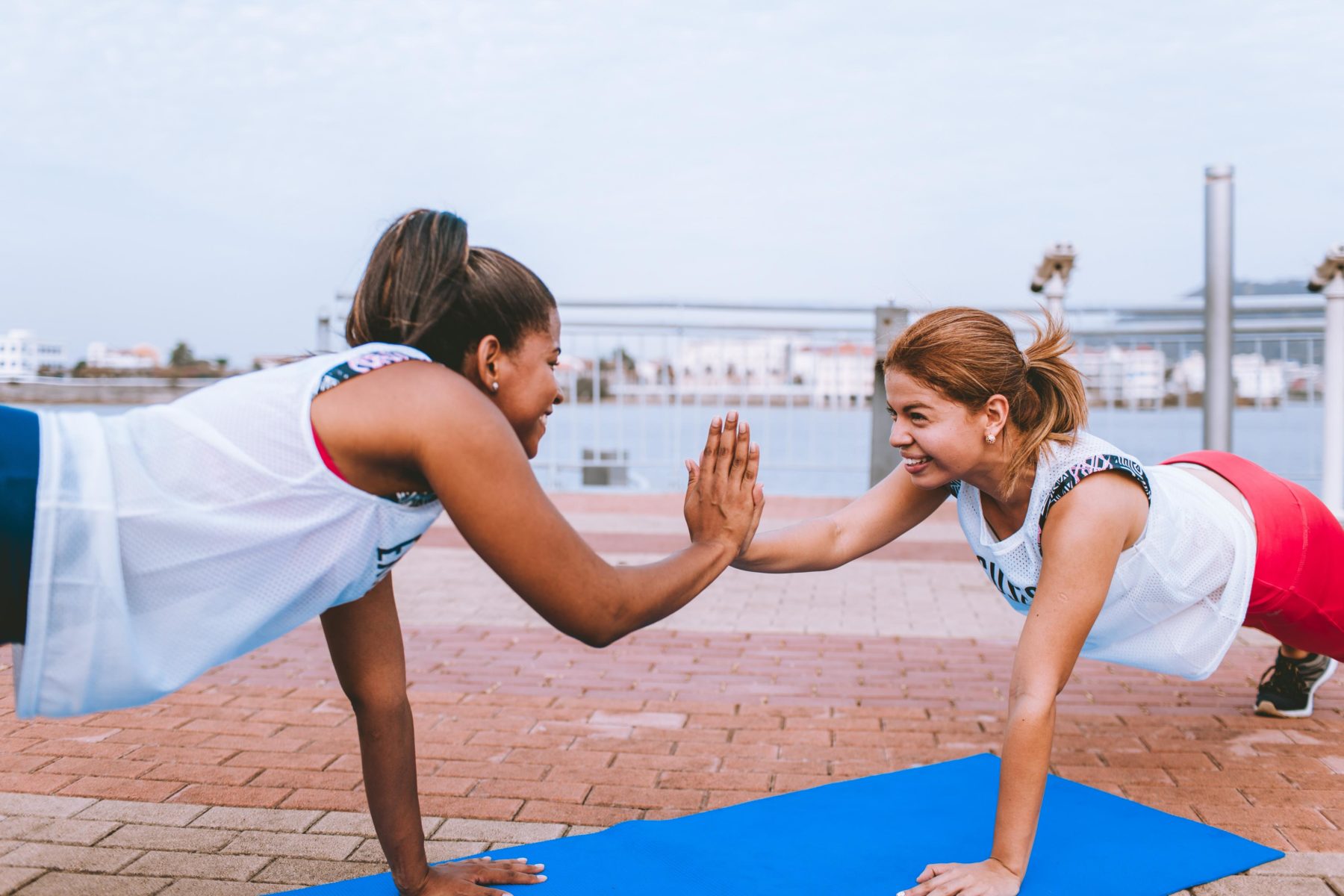Win Your Workout

As I was handed a small, festively wrapped box from under the Christmas tree, I was immediately curious as to what it could be. When I unwrapped the little box, I was intrigued by what my sister had gotten me for Christmas: the new Amazon Halo band.
While I examined the foreign object, my sister showed me a video that explained all the specs of the band. From a live heart rate monitor and sleep tracker to a 3D-image body scanner and microphone that claims to analyze your tone to show you how you sound to others, there was plenty of reason for me to be both skeptical and fascinated. Regardless, I decided to try it out.
The band is one among many new technologies which contribute to a recent mode of staying active and healthy living — gamification.
Gamification has been widely defined as a way to integrate game mechanics into everyday activities and, in this case, exercise in order to motivate, improve engagement or push through a workout.
Similar to gadgets including Fitbit and Apple Watch, the Halo fitness tracker rewards points when you are active and removes points when you have been sedentary for a given amount of time. The Halo automatically sets a goal of achieving 150 points per week in order to reach physical activity recommendations informed by the World Health Organization and Centers for Disease Control and Prevention.
However, wearable technologies only skim the surface of the concept of gamification.
Gamification is used in various environments and techniques to improve people on both sides of the spectrum. From college and professional athletes to people who are looking to start pursuing an active lifestyle, gamification has been successfully integrated into the world of fitness.
“Technology is being used in a way that has never been used before to the benefits of athletes. Virtual reality is one example,” says Timothy Zeddies, Ph.D., a local psychologist who specializes in sports psychology at Central Austin Psychology Group. “And I can envision that virtual reality technology is going to be enhanced even more at some point and be used as a way of helping people improve various aspects of their health.”
According to ResearchGate, in a case study of virtual reality among American football training, a user evaluation was conducted over a three-day training session, where the goal was to focus on each subject’s ability to make pre-snap reads and correctly identify the best receiver to throw the ball to in 10 different trial plays. The results showed an overall average of 30% improvement over all subjects.
VR is only one example. Proving to be an adequate training regimen for athletes who play football and other sports, many apps are now even being used to gamify workouts in different ways.
Among everyday use, fitness apps such as Strava, MyFitnessPal and Nike Training Club offer ways for users to track exercise by competing with friends, people in your neighborhood or even yourself as you achieve personal goals.
These gamified fitness platforms allow for healthy competition among peers and even help establish fitness communities around your city. However, Zeddies says these technologies should only be used as an aid to building connectedness rather than as a supplement.
“The reason many box gyms in Austin are so popular is that they give the members who go there a very powerful sense of community,” Zeddies says. “Allison Belger wrote a book called “The Power of Community,” where she explained how CrossFit communities function in a way like a church, in that they inspire their members and provide a way to connect other people while going through a mutual experience of suffering.”
Companies such as OrangeTheory, F45 and Peloton also claim to build this community for their participants while using the concept of gamification in their classes in order to motivate and engage their participants.
Using class ranking systems or heart rate monitors, many of these classes hold participants accountable to themselves and each other as a way to help everyone get the most out of their workouts.
For others who prefer to work out alone, fitness equipment companies have also dipped their toes into the gamification market by using apps that connect one’s phone with a product to help keep users engaged during the workout.
Stealth, for example, is an interactive core workout tool that uses games on one’s phone (within the corresponding app) to create a more effective, engaging and entertaining core workout than a static plank. Using your core as the controller of the game, users can capture targets, go down paths filled with obstacles and complete mazes.
However, like most workout machines, this mode of gamification may also be a deterrent for people who do not use it properly or for users who tend to lose focus on their exercise form, Zeddies says.
“Focus is one of the most important mental skills that can be learned, and what commonly happens is, as fatigue increases, focus decreases, and so it is important for athletes to know how to prevent that from happening as their fatigue sets in so their performance doesn’t suffer as much,” Zeddies says. “A concept that comes to mind is one of mindfulness — in other words, being present as much as possible in the here and now as a way of enhancing your experience.”
Zeddies says devices such as exercise monitors (such as the Halo band) may help do just that.
“These trackers hone users in at the moment and [help them] be more self aware of the degree to which they are moving or not,” Zeddies says. “In our rather sedentary society, I think it is a really good thing that can help deepen the awareness of what they are doing in order to stay active.”






